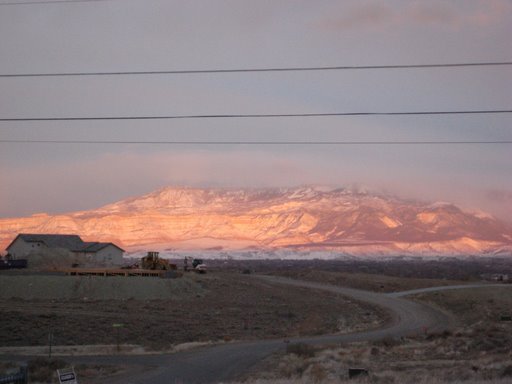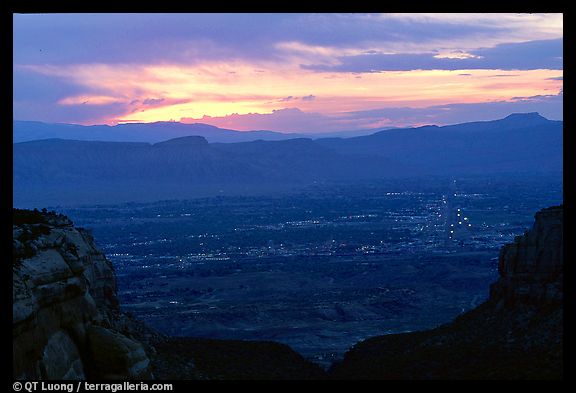 A new power rising: Use of solar increasing in county
A new power rising: Use of solar increasing in county
By MIKE SACCONE
Tuesday, October 14, 2008
Given the role the sun has played every year literally growing local farmer Brant Harrison’s organic fruit and vegetable business, he figured it was time to take their business relationship to the next level.
With an eye on being more environmentally friendly and saving his business, Kokopelli Fruit and Produce, a little green, Harrison installed a solar panels atop his shop.
“Over a year’s time, averaging out, it will really decrease the amount of energy we have to consume, produced by the power plant right across the road,” Harrison said, referencing the Cameo coal-fired power plant across the Colorado River.
Harrison is not alone.
In fact, according to a report from the Grand Junction-based solar energy research institute, he is one of a growing number of Mesa County residents and businesses hooking up their solar arrays to the electrical grid.
According to projections by local energy analyst Lou Villaire, the number of individuals “tapping into” the grid with solar energy will grow from zero at the start of 2006 to 300 users by the end of 2008.
Villaire, who runs the Grand Valley Solar Center, said the Grand Valley’s solar usage parallels that across the state.
He cites 2004’s Amendment 37, which required that all of Colorado’s electrical utilities produce 10 percent of their energy through renewable means, as one of the primary reasons the state has so quickly encouraged residential and commercial solar production.
Colorado’s leaders doubled down on Amendment 37’s mandate last year, mandating that 20 percent of all retail electrical sales be produced from renewable sources by 2020.
As a result of these mandates, Villaire wrote, the state’s largest electricity producer, Xcel Energy, has paid out nearly $31.3 million in rebates to Colorado residents and companies through its Solar Rewards Program.
Grand Valley Power, which also provides power throughout the county, is not offering any solar credits.
For this growth to continue, Villaire said, it is essential that the federal government agree to extend a substantial credit it provides home and business owners to install solar equipment, totaling 30 percent of the equipment costs up to $2,000.
Tom Plant, director of the Governor’s Energy Office, said the credits have been “enormously important” is making Colorado one of the nation’s leaders in creating new solar electrical production.
“The investment tax credit is what drives our large-scale solar development,” Plant said of the credit, which Congress extended this month as part of an economic bailout package.
Colorado has installed 12.4 megawatts worth of solar cells as of 2007, up 61 times its 2005 solar cell output.
Plant said solar might not be the only way to meet the state’s renewable energy production standards, but it is the best way to include more individuals and businesses in meeting that goal.
“There’s no silver bullet, but there is silver buckshot,” Plant said, “so we’re trying to advance a number of different solutions.”
Solar facts
• Solar energy generation in Mesa County saves residents an estimated $200,000 every year
• The average size of a residential solar array tapped onto the electrical grid in Grand Junction is five kilowatts.
• The average size of a commercial solar array tapped onto the electrical grid in Grand Junction is 9.5 kilowatts.
• The average out-of-pocket expense for a solar array tapped onto the electrical grid in Grand Junction is $22,000.
• 10 percent of Xcel Energy’s solar grid ties in Colorado are in Mesa County.
Source: The Grand Valley Solar CenterSolar rebates and tax credits
For households powered by Xcel Energy, the company offers:
• A $2.50 energy credit for every watt of your solar array’s capacity
• A $2 rebate for every watt of your solar array’s capacity paid upon installation
The federal government offers tax credits for:
• 30 percent of solar energy equipment, up to $2,000
• 30 percent of solar water heating equipment up to $2,000
Sources: Xcel Energy, U.S. Energy Department, Lou Villaire












